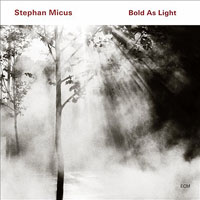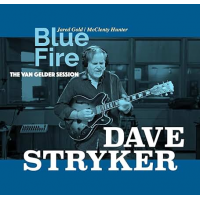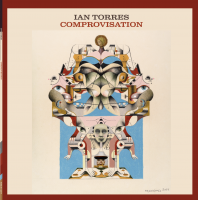Home » Jazz Articles » Album Review » Stephan Micus: Bold as Light
Stephan Micus: Bold as Light
For Bold as Light—Micus' nineteenth recording, and the first since 2008's Snow—the eternal and intrepid student introduces a number of instruments, including the raj nplaim, a free-reed bamboo pipe (where sound is produced as air flows past a vibrating reed) from Laos, and the Japanese nohkan flute, also made of bamboo. Micus doesn't, however, just acquire instruments from distant cultures, he has custom versions built, and so a number of modified raj nplaims—of varying lengths and, with additional holes augmenting the native instrument's five to allow for alternate tunings—provide the freedom to create virtual choirs, with six of them used on the meditative opening, "Rain," and eight on his haunting "The Child," where Micus' folkloric lyricism is given a gentle pulse through use of the sinding, a West African harp.
What's always been one of Micus' most compelling qualities is that, despite studying music from various cultures, when it comes to his own, the borders are entirely dissolved; the instruments used in pursuit of a kind of music freed from—but nevertheless all-inclusive of—the various places from which it comes. And for those who find it all too easy to assign labels like "new age" to Micus, such reductionist categorizing only diminishes the deeper meaning of his music.
This is music that feels as solitary as the process in which it's made—Micus alone in his MCM Studio, gradually shaping pieces over the course of months or, sometimes, years—speaking deeply of spirituality, meditation and the pursuit of a calm, personally fulfilling life. But equally—and, especially here, because of the album's general lack of percussion or rhythm-capable instruments—Bold as Light's overarching tranquility can, for those engaged in the hustle and bustle of modern life, become a welcoming, fifty-minute hiatus from reality, and a chance to consider that it truly needn't be that way.
Track Listing
Rain; Spring Dance; Flying Swans; Wide River; Autumn Dance; Golden Ginkgo Tree; The Shrine; Winter Dance; The Child; Seven Roses.
Personnel
Stephan Micus
guitar, 12-stringStephan Micus: raj nplaim (1, 4, 7, 9, 10), bass zither (2, 8), chord zither (2, 8), Bavarian zither (2, 8), nohkan (2, 5, 8), sho (3, 10), voice (3, 7, 10), kalimba (6), shakuhachi (6), sinding (9).
Album information
Title: Bold as Light | Year Released: 2010 | Record Label: ECM Records
Tags
PREVIOUS / NEXT
Support All About Jazz
 All About Jazz has been a pillar of jazz since 1995, championing it as an art form and, more importantly, supporting the musicians who make it. Our enduring commitment has made "AAJ" one of the most culturally important websites of its kind, read by hundreds of thousands of fans, musicians and industry figures every month.
All About Jazz has been a pillar of jazz since 1995, championing it as an art form and, more importantly, supporting the musicians who make it. Our enduring commitment has made "AAJ" one of the most culturally important websites of its kind, read by hundreds of thousands of fans, musicians and industry figures every month.


















